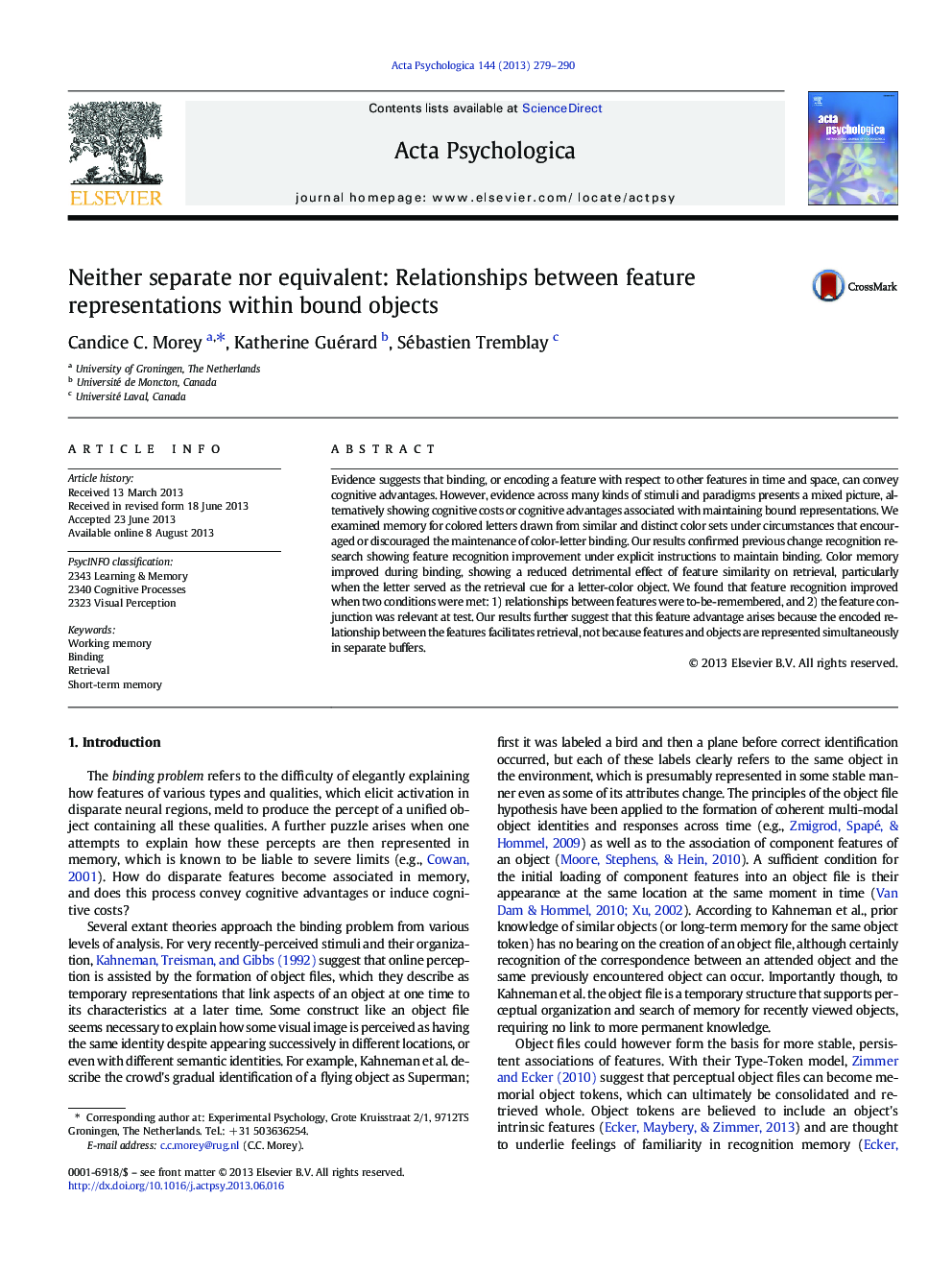| Article ID | Journal | Published Year | Pages | File Type |
|---|---|---|---|---|
| 10453774 | Acta Psychologica | 2013 | 12 Pages |
Abstract
Evidence suggests that binding, or encoding a feature with respect to other features in time and space, can convey cognitive advantages. However, evidence across many kinds of stimuli and paradigms presents a mixed picture, alternatively showing cognitive costs or cognitive advantages associated with maintaining bound representations. We examined memory for colored letters drawn from similar and distinct color sets under circumstances that encouraged or discouraged the maintenance of color-letter binding. Our results confirmed previous change recognition research showing feature recognition improvement under explicit instructions to maintain binding. Color memory improved during binding, showing a reduced detrimental effect of feature similarity on retrieval, particularly when the letter served as the retrieval cue for a letter-color object. We found that feature recognition improved when two conditions were met: 1) relationships between features were to-be-remembered, and 2) the feature conjunction was relevant at test. Our results further suggest that this feature advantage arises because the encoded relationship between the features facilitates retrieval, not because features and objects are represented simultaneously in separate buffers.
Keywords
Related Topics
Life Sciences
Neuroscience
Cognitive Neuroscience
Authors
Candice C. Morey, Katherine Guérard, Sébastien Tremblay,
